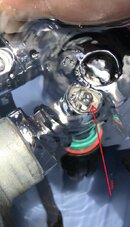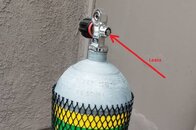markmud
Self Reliant Diver--On All Dives.
Face palm on the "pre-blended" part by XS Scuba. But the real point is that they note the cylinder is oxygen cleaned.
Please edumacate me. Where does it say O² clean? If they are, I wasted money getting a two brand new tanks O² cleaned when they were already O² clean.
I believe they are prepped for Nitrox to 40%. Not O² clean. According to my LDS of record.
My regulators weren't O² clean when I bought them, but they are compatible with Nitrox to 40%.
What am I missing here? I was taught that there was a distinction. Furthermore, aren't tanks shipped with the valve off; therefore, they are no longer considered O² clean or VISsed for that matter? I have read that tanks are cleaned by the manufacturer to remove hydrocarbons, but does the valve have Viton O-rings verses Buna-n O-rings and Christo lube instead of silicone grease? Depends on the valve specs, right? Buna-n O-rings and silicone grease are fine to 40%.
I am not trying to be a jerk here.
Through fifteen years of dealing with nitrox, and getting pre-blended nitrox from NuVair systems (no it is not banked; they are demand systems on the boats I have been on), I have not had these issues. Are the standards different in your area? No O² clean tanks required on these boats. I think two SoCal boats do partial pressure blending, they require O² clean.
Although I do note that the differences here are much smaller at 5x for CO and 2x for CO2, vs 50x for hydrocarbons, the less crap in there the better if you ask me.
There is a person who looms very large on SB, who has written about an incident where he lent out his O² clean tanks. The borrower used someone's backyard compressor to fill them. When the owner used partial pressure blending for nitrox, the theory is the O² reacted with the hydrocarbons and created CO in the tank. I don't think the theory has been refuted. From my fourth grade education, it seems completely plausible.
What say you @dead dog, my bird of a feather? Us forth graders need to stick to gether!
cheers,
m





